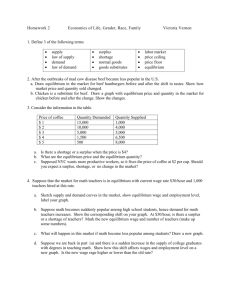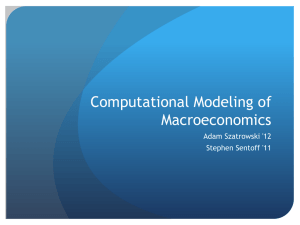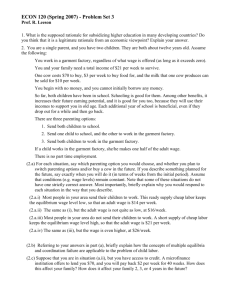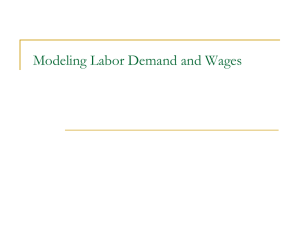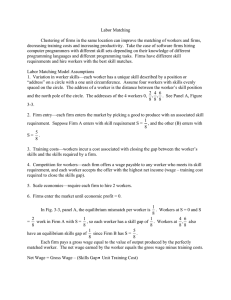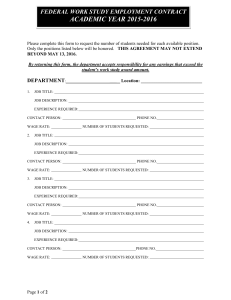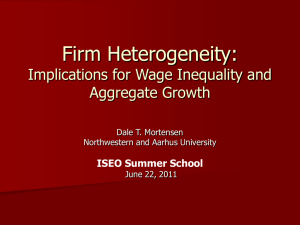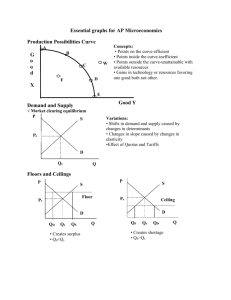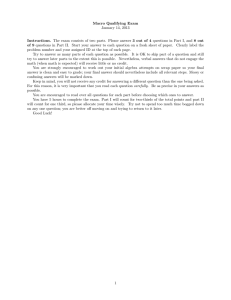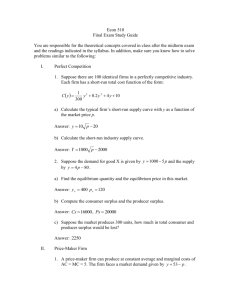Chapter 4. Labor Market Equilibrium
advertisement
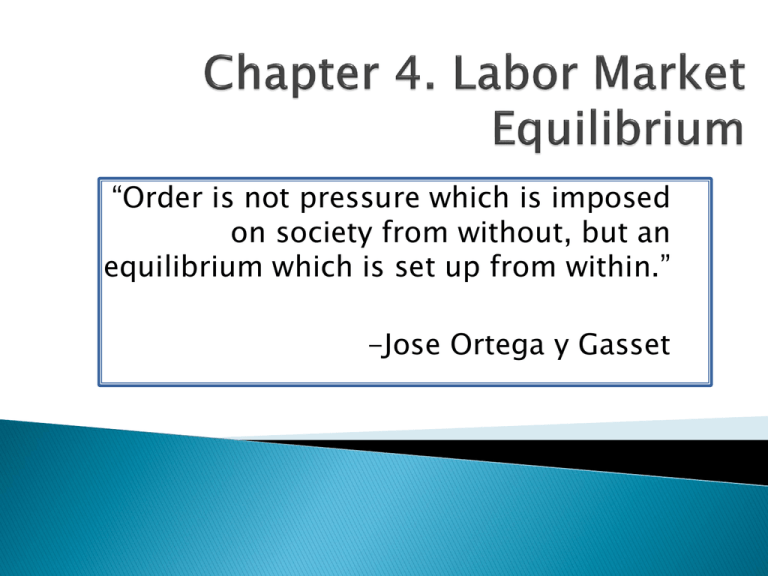
“Order is not pressure which is imposed on society from without, but an equilibrium which is set up from within.” -Jose Ortega y Gasset Labor market equilibrium coordinates the desires of firms and workers, determining the wage and employment observed in the labor market. perfect competitive labor market • invisible hand theorem monopsonies,monopolies policy application producer surplus worker surplus The competitive market maximizes the total gains from trade accruing to the economy. efficient allocation: the allocation of persons to firms that maximizes the total gains from trade in the labor market. If workers were mobile and entry and exit of workers to the labor market was free, then there would be a single wage paid to all workers. The allocation of workers to firms equating the wage to the value of marginal product is also the allocation that maximizes national income (this is known as allocative efficiency). The “invisible hand” process: self-interested workers and firms accomplish a social goal that no one had in mind, i.e., allocative efficiency. The “single wage” property of a competitive equilibrium has important implications for economic efficiency. The allocation of workers to firms that equates the value of marginal product across markets is also the sorting that leads to an efficient allocation of labor resources. 5.7 LA Percent Annual Wage Growth GA NH ME VT VA 5.5 MS AR 5.3 MD MA IA FL NSC C KS MI CT DE TN AL NE 5.1 NJ OK MN TXMO PA WI RI UT AZ ND SD OH IL CO KY 4.9 WV IN WA NY MT CA NM NV 4.7 ID OR WY 4.5 .9 1.1 1.3 1.5 Manufacturing Wage in 1950 1.7 1.9 NAFTA created a free trade zone in North America. Free trade reduces the income differential between the United States and other countries in the zone, such as Mexico. Total income of the countries in the trade zone is maximized as a result of equalized economic opportunities across the countries in the zone.



